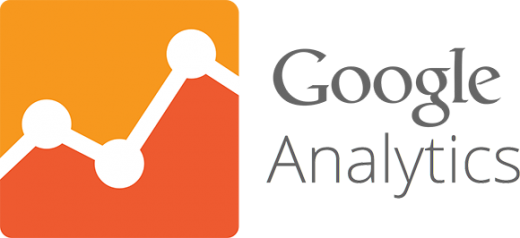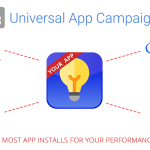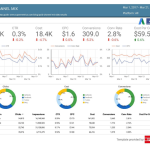Understanding Your New Google Analytics Options
April 27, 2016

Just over ten years ago, Google Analytics launched with the goal of providing insight into the behavior of your website’s visitors. In the last decade, the platform has been studied, optimized, and rebuilt so many times that even the experts need to remain in constant study. You may spend months mastering a certain type of reporting, only to find it sunset a month later, replaced by something similar yet wholly confusing to you. One thing that has never changed about Google Analytics is that the platform is entirely free.
Then someone at Google realized that not all websites are created equal. While most businesses using Google Analytics for their website were perfectly content using the free version to mine their data for customer behaviors, a growing number were in need of an analytics platform that could handle a larger and more diverse audience. Larger businesses, whose websites easily received upwards of ten million pageviews per month, needed a way to analyze their visitors without Google either capping the number of results returned on a search, or sampling only a portion of the data when returning results. These businesses turned to paid solutions, including WebTrends, Adobe Analytics and other platforms, so to remain competitive, Google Analytics Premium was born. This paid version of Analytics is the bigger, stronger brother of the free version that is used every day by so many businesses.
Now Google is expanding on their paid offerings by introducing the Analytics 360 Suite, a set of six individual products with the ability to give you better access to and understanding of your data. We don’t yet know the cost of each product, but it is known that they all come with a price tag which can be leveraged by bundling products together. While 360 Suite is still in its infancy, several test studies have been performed by well-known brands with each of the products, allowing businesses to glean some insight into what they do, and how they stand to get you using your analytics data to its full potential. Let’s take a look at what we already know about each product, to understand which may be right for your business.
Google Analytics 360
Taking a closer look at the 360 offerings starts with Google Analytics 360. How does it differ from Google Analytics Premium? It doesn’t. Analytics 360 is Analytics Premium re-branded to fit the 360 naming scheme. While on day one there may not be a difference in the paid Analytics offering, that’s not to say they won’t be making important updates along the way. Currently, the Premium version of Analytics offers more precise access to data on websites that receive a large amount of traffic. If you’ve ever run a report in Google Analytics and noticed that the results shown are only a sampled percentage of your total traffic, that’s a roadblock that Premium users aren’t hindered by. When you’re talking about monthly pageviews in the millions, or even billions, you want to make sure you’re making informed decisions based on all of your data, not just a percentage. Since 360 Suite is meant for all of its parts to work together, the data accumulated in Analytics 360 will be leveraged easily within the other products.
Google Tag Manager 360
Google Tag Manager is an efficient way for marketers to place tags on a website without needing too much knowledge of coding, which means there’s less of a risk that someone on your marketing team crashes your website trying to place a third party remarketing tag. How is Tag Manager 360 different from the free version that anyone can currently use? The word from Google is that all current Google Analytics Premium clients are being upgraded to have Google Tag Manager 360 as well. Just like Analytics 360, the Google Tag Manager 360 product gives you access to dedicated support staff at Google. Beyond that, there doesn’t seem to be any current difference between the paid and free Tag Manager products. Unlike Analytics, there’s no data cap within Google Tag Manager that will cut you off after you reach a certain threshold. Just like in the free Tag Manager, you can place as many tags as you need without worrying about going overboard. While Google Tag Manager 360 might not sound like it’s breaking new ground, its inclusion as a separate product in the 360 Suite indicates that it will be developed and optimized along with the other 360 products.
Google Attribution 360
Attribution 360 was previously called Adometry, and was acquired by Google in 2014. If you’ve ever run a marketing campaign, you know that making sense of offline and online data can be tough to manage. You’ll likely have ads running across several platforms driving conversions both online and in-person. Ensuring that the right conversions get attributed to the appropriate campaign can be difficult and time-consuming. What Attribution 360 looks to do is make sense of your marketing data, ensuring that your customers’ journey from awareness to purchase is tracked appropriately. The case study used by Google in the 360 Suite announcement showed how Nest, makers of home technology, used Attribution 360 to optimize their television ad rotation to achieve maximum conversions. Until recently, these decisions were made using historical data from past campaigns, but Attribution 360 is looking to narrow the gap between receiving advertising feedback, and using that data to make intelligent changes to your marketing plan.
Google Audience Center 360
Odds are there are a lot of screens you use to analyze your data. The Google Analytics and AdWords platforms offer a lot of insight into how your audience behaves, but you’ve also got countless third-party sites that are providing additional data. It can be a hassle to pull all of these reports into one view to compare results and make intelligent optimizations. Audience Center 360 plans to take that frustration away, providing one view of multiple audiences. Marketers can use this to increase their understanding of who their audience is, as well as create lookalike audiences to increase reach.
Google Data Studio 360
If you’ve ever had to present your findings from an Analytics report to a group of colleagues, you’ve probably had difficulty summarizing your data into a format that they’ll understand. Something tends to get lost between the actual analysis of the data and the presentation. Data Studio 360 hopes to increase the impact of your analytics reports by providing stylish, informative reports. While it’s possible to create these reports yourself, transcribing the data into another program can be time-consuming, and it’s possible to lose some of the emphasis you were hoping to convey. Data Studio 360 exports data from Google’s API into a very attractive series of charts and graphs, as well as brief summaries of what the data points mean.
Google Optimize 360
Every day you can find someone talking about how personalization is the future of online user experience. Many online retailers are already ahead of the game on this, leaving smaller businesses to play catch-up using the personalization tools at their disposal. Many CMS platforms already offer their own personalization technology, allowing you to display content and imagery that is unique to an individual’s habits or traits. While the technology exists, it’s generally built with developers in mind instead of marketers. Optimize 360 wants to turn the tables in favor of marketers, allowing them to make personalized experiences for their site visitors based on Google’s data points. It is currently unknown if you will be able to integrate Optimize 360 personalization with any existing CMS personalization products, but we’ll be monitoring for updates from Google.
Choosing the Right Google Analytics Solutions for Your Business
As data analysis becomes more important in the quest to make intelligent marketing decisions, so must the ability to successfully leverage that data in a timely manner. The 360 Suite offers powerful products aimed at making it easier for businesses to effectively market their services through informed optimization and concise reporting. Some companies could probably benefit from every product in 360 Suite, while others might only cherry pick a couple. For many, these new services are enticing, but ultimately the current free platforms still provide enough to manage their analytics needs.
While there is no current set cost for the 360 Suite, it will likely be priced based on individual business needs. It has been noted that there will be bundle pricing, so the deal will be better based on how many of the products you purchase. Importantly, there is no plan to begin charging for the basic Analytics and Tag Manager products so for the vast majority of businesses quite content with what comes for free, they can rest assured that indeed, there are some things in life for free.
Digital & Social Articles on Business 2 Community
(63)













